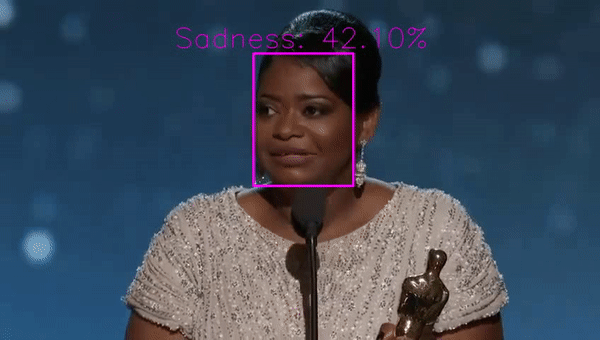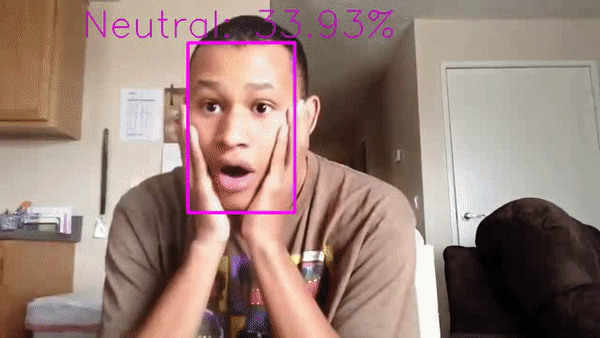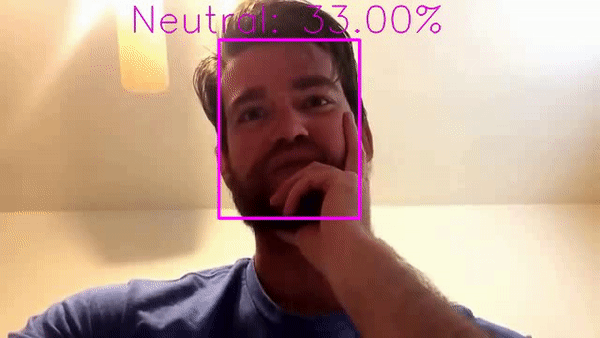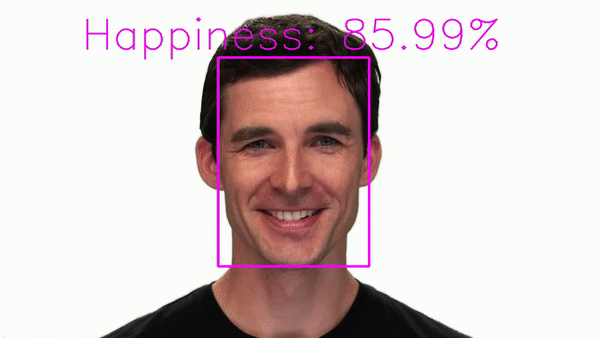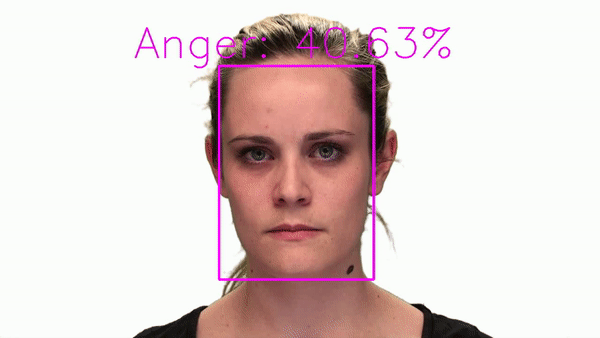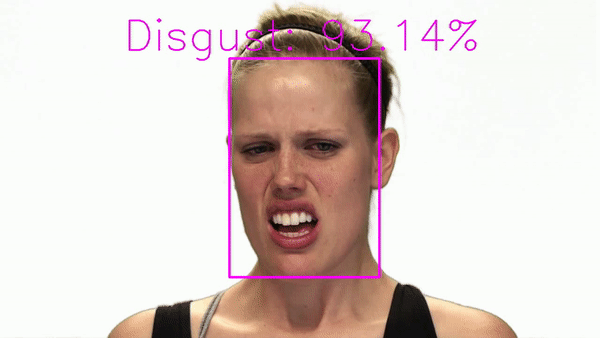In this paper we present the largest visual emotion recognition cross-corpus study to date. We suggested a novel and effective end-to-end emotion recognition framework consisted of two key elements, which are employed for differentfunctions:
(1) the backbone emotion recognition model, which is based on the VGGFace2 (Cao et al., 2018) ResNet50 model (He et al., 2016), trained in a balanced way, and is able to predict emotion from the raw image with high performance;
(2) the temporal block stacked on top of the backbone model and trained with dynamic visual emotional datasets (RAVDESS (Livingstone et al., 2018), CREMA-D (Cao et al., 2014), SAVEE (Haq et al., 2008), RAMAS (Perepelkina et al., 2018), IEMOCAP (Busso et al., 2008), Aff-Wild2 (Kollias et al., 2018)) using the cross-corpus protocol in order to show its reliability and effectiveness.
During the research, the backbone model was fine-tuned on the largest facial expression dataset AffectNet (Mollahosseini et al., 2019) contained static images. Our backbone model achieved an accuracy of 66.4 % on the AffectNet validation set.
In this GitHub repository we propose for common use (for scientific usage only) the backbone emotion recognition model and 6 LSTM models obtained as a result of leave-one-corpus-out cross-validation experiment.
| Train datasets | Test dataset | Name model | UAR, % |
|---|---|---|---|
| RAVDESS, CREMA-D, SAVEE, RAMAS, IEMOCAP | Aff-Wild2 | Aff-Wild2 | 51,6 |
| Aff-Wild2, CREMA-D, SAVEE, RAMAS, IEMOCAP | RAVDESS | RAVDESS | 65,8 |
| Aff-Wild2, RAVDESS, SAVEE, RAMAS, IEMOCAP | CREMA-D | CREMA-D | 60,6 |
| Aff-Wild2, RAVDESS, CREMA-D, RAMAS, IEMOCAP | SAVEE | SAVEE | 76,1 |
| Aff-Wild2, RAVDESS, CREMA-D, SAVEE, IEMOCAP | RAMAS | RAMAS | 44,3 |
| Aff-Wild2, RAVDESS, CREMA-D, SAVEE, RAMAS | IEMOCAP | IEMOCAP | 25,1 |
To check the AffectNet validation set, you should run check_valid_set_Affectnet.ipynb.
To get face areas from video, you should run get_face_area.ipynb.
To check dynamic video using one CNN-LSTM model as an example, you should run test_LSTM_RAVDESS.ipynb.
To predict emotions for all videos in your folder, you should run the command python run.py --path_video video/ --path_save report/.
To demonstrate the functioning of our pipeline, we have run it on several videos from the RAVDESS corpus. The output is:
To get new video file with visualization of emotion prediction for each frame, you should run the command python visualization.py. Below are examples of test videos:
If you are using EMO-AffectNetModel in your research, please consider to cite research paper. Here is an example of BibTeX entry:
@article{RYUMINA2022, title = {In Search of a Robust Facial Expressions Recognition Model: A Large-Scale Visual Cross-Corpus Study}, author = {Elena Ryumina and Denis Dresvyanskiy and Alexey Karpov}, journal = {Neurocomputing}, year = {2022}, doi = {10.1016/j.neucom.2022.10.013}, url = {https://www.sciencedirect.com/science/article/pii/S0925231222012656}, }
- Q. Cao, L. Shen, W. Xie, O. M. Parkhi and A. Zisserman, "VGGFace2: A Dataset for Recognising Faces across Pose and Age," 2018 13th IEEE International Conference on Automatic Face & Gesture Recognition (FG 2018), 2018, pp. 67-74, doi: 10.1109/FG.2018.00020.
- K. He, X. Zhang, S. Ren and J. Sun, "Deep Residual Learning for Image Recognition," 2016 IEEE Conference on Computer Vision and Pattern Recognition (CVPR), 2016, pp. 770-778, doi: 10.1109/CVPR.2016.90.
- S. R. Livingstone, F. A. Russo, "The ryerson audio-visual database of emo-tional speech and song (RAVDESS): A dynamic, multimodal set of facial and vocal expressions in north american english," PLoS One, vol. 13, no. 5, 2018, doi: 10.1371/journal.pone.0196391.
- H. Cao, D. G. Cooper, M. K. Keutmann, R. C. Gur, A. Nenkova and R. Verma, "CREMA-D: Crowd-Sourced Emotional Multimodal Actors Dataset," IEEE Transactions on Affective Computing, vol. 5, no. 4, pp. 377-390,2014, doi: 10.1109/TAFFC.2014.2336244.
- S. Haq, P. Jackson, J. R. Edge, "Audio-visual feature selection and reductionfor emotion classification," International Conference on Auditory-VisualSpeech Processing, 2008, pp. 185–190.
- O. Perepelkina, E. Kazimirova, M. Konstantinova, "RAMAS: Russian mul-timodal corpus of dyadic interaction for affective computing," 20th International Conference on Speech and Computer, 2018, pp. 501–510, doi: 10.1007/978-3-319-99579-3_52.
- C. Busso, M. Bulut, C. C. Lee, A. Kazemzadeh, E. Mower, S. Kim, J. N.Chang, S. Lee, S. S. Narayanan, "IEMOCAP: Interactive emotional dyadicmotion capture database," Language Resources and Evaluation,42, 2008, doi: 10.1007/s10579-008-9076-6.
- D. Kollias, S. Zafeiriou, Aff-Wild2: Extending the Aff-Wild database for955affect recognition, ArXiv abs/1811.07770, 2018, pp. 1–8.
- A. Mollahosseini, B. Hasani and M. H. Mahoor, "AffectNet: A Database for Facial Expression, Valence, and Arousal Computing in the Wild," IEEE Transactions on Affective Computing, vol. 10, no. 1, pp. 18-31, doi: 10.1109/TAFFC.2017.2740923.
